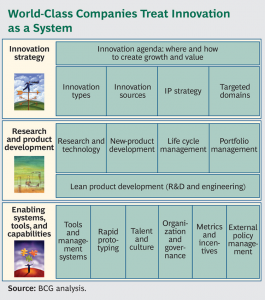10 years ago is was about just having patents. 5 years ago it was about having a high volume of patents. Today it is about having quality patents.
The impact of this re-balancing for investors, either venture capitalists buying into companies with portfolios or institutional investors adding IP licensing companies to their portfolios, require a shift in the way traditional due diligence is both approached and reviewed. The legal side of patent or trademark due diligence is still critical, however the investors that layer a business oriented approach to more deeply understand the full opportunity will be poised for greater success.
As an investor, one can break the business-IP due diligence reviews into at least 3 discrete points for review:
1) A strong portfolio alignment with business opportunities:
As a sign of alignment, the IP due diligence should highlight what markets and segments the patents cover, as well as the type of IP opportunities they support. To accomplish this it requires a technical and business expert review of the portfolio against the business use will give direction on where value (or gaps) are identified.
From a due diligence perspective one measure of a ‘quality’ portfolio against opportunities is in considering the use case the business – defensive, standard essential, commercially essential, licensing grade, litigation-ready, etc. Further, for operating firms, this needs to take into account not only the current business environment, but the future business opportunities of the venture. Having a partial IP position as a company moves into the space or segment may prove to be immensely valuable as the venture (and investment) matures.
2) Tomorrow’s geographical coverage:
With an average protection of 20 years for many patents, there is ample time for emerging markets to catchup with iterations of technology from developing markets.
As an example, even 10 years ago the volume and growth rate of companies filing patents in china were small as compared to todays rates, which WIPO reported as high as 35% increase in growth in past years. Even now the high costs to expand all patents into multiple geographies it was only the large multinationals that kept their coverage in China. However IAM Magazine recently reported how a focus on IP in China has been key in solidifying high value technology transfer deals between companies like Xiaomi and Leadcore.
From a due diligence perspective, geographically relevant filings needed to reviewed to understand the best business scenario of the investment.
3) Mind the gaps:
A strategic portfolio analysis, for either due diligence or other investment purposes, needs to highlight the business value of the portfolio. Moreso for investors looking to purchase an operating company with IP rights, an additional an in-depth analysis needs to also highlight the portfolio gaps.
Understanding the limitations will allow the investor to to both make a more informed valuation or purchase price. For more hands-on investors it gives an indicator where the management team needs to add to their position, or where the board needs to continue to steer the investment towards.
Summary:
In the past such an approach was not needed – mere presence of IP (or any volume of IP for that matter) was all that mattered. Now, with the realistic shift in the PAE or NPE IP savvy market towards measuring patent portfolio quality before purchasing, investors must play catchup as the new benchmark becomes the standard.
As a result, for investors being asked to offering a premium for existing IP, a business focused due diligence analysis needs to be done along side the traditional legal review and validation.
It is not about validating the patents in a traditional sense of validity and infringement, it is about validating the business position the portfolio will support (or not support). It is the difference between having IP as an add-on to the purchase, and a pillar that the future valuation and revenue will be built on.

